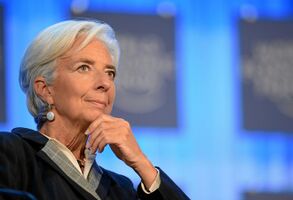Culture in strategic decisions
Strategic decisions are the resolutions which concern the environment in which a firm operates, the resources and the people who form the firm, and the interaction between these.[1] Cultural logic refers to the understanding of a culture’s fundamental beliefs, the ways that those beliefs interact with each other by generating new information, and with the perceived desirability of alternative actions. This is how people from diverse cultures interact and are understood by these certain activities. Persuasive communication is one of many useful behavioral strategies people when they wish to impact people from different cultures.[2] In terms of strategic decisions, these can be influenced by multiple factors and variables according to one's culture, due to distinct ways to transmit ideas and interpreting messages. Therefore, its formulation and implementation will differ from one to another. Norms, values, and premises reflect in the informal system that emerge with the company as it expands. They are reflected as well in the arrangements of the organization which include formal management systems (measurement and reward systems, information systems, planning systems, training systems, etc.) and policies that justify events and situations.[3]
Influence of culture
Culture has important influences on the development and change of the organization at multiple levels, but how these influences impinge on the decision making process is matter of different reasons. There is not yet a fully detailed description of the links between culture and the decision making process, but it is claimed that there is a requirement for an integrative research that explicitly considers the impact of the context on the strategic decision making process. Being such a complex research, it examines to which extent it can be utilized in determining how variations in organizational and environmental factors influence the strategic decision making process.[4]
National culture
National culture is said to have had influenced and still lead decision-making processes on states' choices. There is a strategic culture theory that claims that differences in the way national leaders think about strategy were possibly caused by variations in three distinct levels of analysis: macroenvironmental variables such as ethnocultural characteristics, geography, and history; social, economic, and political structures of a society, as part of societal variables; and micro-level variables which includes militar aspects as military institutions and characteristics of civil-military relations. Two additional generations of the theory point out strategic culture’s avail as a tool of political hegemony and considers organizational culture as an intervening variable.[5]
Professor Geert Hofstede conducted one of the most comprehensive studies of how values in the workplace are influenced by culture. The research included six different dimensions of national culture are based on extensive research done by Professor Geert Hofstede, Gert Jan Hofstede, Michael Minkov and their research teams, the dimension are based on cultural factors and through these dimensions Hoftsede intention is to explain the values of individuals and the way they interact among others. The six dimension include:

- Power Distance Index (PDI),
- Individualism vs Collectivism (IDV),
- Masculinity vs Feminity (MAS),
- Uncertainty Avoidance Index (UAI),
- Long Term Orientation vs Short Term Normative Orientation (LTO), and
- Indulgence vs Restraint (IND).[6]
Fons Trompenaars presented as well his model of national cultural differences, he developed this model with the help of Charles Hampden- Turner, they both published a book under the name Ridding the Waves of Culture, in which they presented the various alternatives through which managing and businesses could be done. According to them an individual would never understand other cultures, even it is tough to comprehend the own culture. The author wanted to understand the different aspects involved in cultures, this attributable to his Dutch-French ancestry. He realized that what could be considered accepted in the Dutch culture could not be taken the same way in the French one while doing businesses.[7]

The dimensions explained by Trompenaars are 7 and consist on:
- Universalism vs Particularism
- Individualism vs Communitarism
- Neutral vs Emotional
- Specific vs Diffuse
- Achievement vs Ascription[7]
- Sequential vs Synchronic
- Internal vs External control
Corporate culture

The need to improve the oversight of severe levers of business performance have been recognized by corporate boards, these include strategy, risk, major transactions, and people, as well as planning and executive compensation. And rigorous and transparent processes have been adopted around these levers. But the lever that hardly ever states on board agendas is culture, even though its contribution to the business world, it is not supervised as the other levers are. A company’s culture can make or break even the most perceptive strategy or the most experienced executives; innovation, growth, market leadership, ethical behavior, and customer satisfaction can be produced by the different cultural patterns in a firm. And a non-efficient culture could block strategic outcomes, decay business performance, decrease customer satisfaction and loyalty, and repress employee engagement.[8] There is a saying that goes: 'Culture eats strategy for breakfast'[9] which refers of the actions of a firm to achieve their goals based on the cultural background. There on it is managers and CEOs' responsibility to take the most favorable decisions to achieve the enterprise goals based on its principles and objectives.
If managers do not take action that enable a firm to adapt to environmental changes they should be prepared to deal with declining demand of products. Managers can try to create an adaptive culture, which is innovative and encourages and rewards middle- and lower-level managers for taking the initiative. Adaptive organizations show three common value sets. The first one emphasises employees to entrepreneurship which leads companies to have values promoting a bias for action. Second, the nature of the organization’s mission, which refers to sticking to the plans and mission of the firm, and the third one refers to how to operate the organization, this values focuses on how to make employees appreciate the environment of work and when pleased the productivity levels will arise.[10]
Organizational culture
There are three common attributes that seem to arise across the varying perspectives within sociology, psychology, anthropology, and management science. The first one is that the concept of shared meaning is critical; secondly, is the notion that organizational culture is constructed socially and is affected by environment and history. The third feature dictates that organizational culture has many symbolic and cognitive layers—culture is thick and resides at all levels.
To help understand these symbolic and cognitive layers, the places where culture is found have been categorized into three fundamental categories: observable artifacts, espoused values, and basic underlying assumptions.[11]
References
- ↑ "Strategic Decisions - Definition and Characteristics" (in en-gb). http://www.managementstudyguide.com/strategic-decisions.htm.
- ↑ Noble, Sander & Obenshain, David F., Jonathan K. & Catherine M.. "Cultural Influences in Decision Making". Evidence Based Research, Inc. (EBR). http://www.dodccrp.org/events/5th_ICCRTS/papers/Track5/085.pdf.
- ↑ Smith, C., & Vecchio, R. (1993). "Organizational Culture And Strategic Management: Issues In The Management Of Strategic Change". Journal of Managerial Issues 5 (1): 53–70.
- ↑ Tarig Siddig, Adam Hammed (2016-04-15). "Impacts of Culture on Strategic Decisions - Exploring Culture and Strategic Decision Making Process in the Sudanese Context" (in en). pp. 1–2.
- ↑ Guo, Jerry M. (2011). The Influence of Culture on Strategic Decision Making in Japan and China. Monterey, California: Dudley Knox Library/ Naval Postgraduate School. pp. 13–14.
- ↑ "Dimensions - Geert Hofstede". https://geert-hofstede.com/national-culture.html.
- ↑ 7.0 7.1 Trompenaars & Hampden-Turner, Fons & Charles (1997). Riding the Waves of Culture. Finland: Intercultural Management Publishers NV/Nicholas Brealey Publishing. pp. 1–9. ISBN 1-85788-176-1. https://ocan.yasar.edu.tr/wp-content/uploads/2013/09/Riding-the-waves_Part-1.pdf.
- ↑ Anderson, Anderson & Lee, George M., Michael J. &Jeremiah B. (2015). Defining Corporate Culture. pp. 36. https://www.spencerstuart.com/~/media/pdf%20files/research%20and%20insight%20pdfs/definingcorpculture_30apr2015.pdf.
- ↑ Hyken, Shep (2015-05-12). "Drucker Said 'Culture Eats Strategy For Breakfast' And Enterprise Rent-A-Car Proves It". Forbes: 1–2. https://www.forbes.com/sites/shephyken/2015/12/05/drucker-said-culture-eats-strategy-for-breakfast-and-enterprise-rent-a-car-proves-it/#35f820f22749.
- ↑ Hill & Jones, Charles W. L. & Gareth R. (2010,2008). Strategic Management an integrated approach 9th Edition. USA: Cengage Learning. pp. 397. ISBN 978-0-538-75107-0.
- ↑ Tharp, Bruce M.. Defining "Culture" and "Organizational Culture": From Anthropology to the Office. HAWORTH. pp. 5. http://www.thercfgroup.com/files/resources/Defining-Culture-and-Organizationa-Culture_5.pdf.
External links
